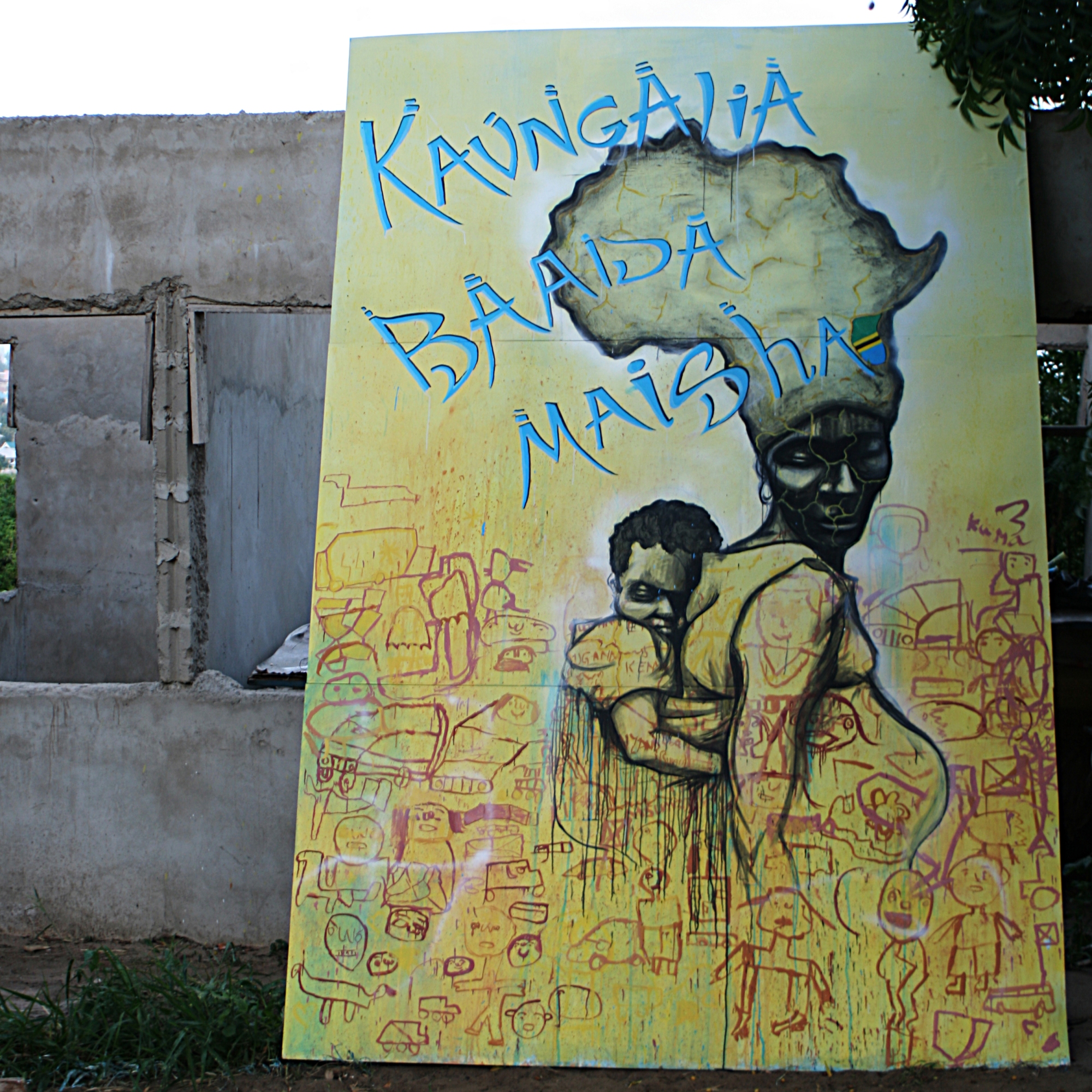NATAL CARE PROJECT WITH ART IN TANZANIA: We travelled up to the hills above Tageta township and stayed with Art In Tanzania volunteers and intern base. Here we held discussions with local mothers about natal care and what it means to them. Art In Tanzania will be building a natal centre on their grounds this year for the local community to use, in an attempt to reduce the shockingly high rate of infant and mother mortalities.
Due to the natal centre having not been built yet, we made a huge structure of 6x 8x4ft ply that will be hung on the side of the natal centre, once built. Kids and mothers from the local area came to get involved and help paint. The words in Swahili read “Look after Life”
The artwork will be seen by passers by therefor spreading the word of the centres opening to more women and children, thus helping reduce unnecessary deaths of mothers and babies.
Sub-Saharan Africa is by far the riskiest region to be born.
The 14 countries with the highest first-day death rates are all in sub-Saharan Africa.
As a region, sub-Saharan Africa’s first-day mortality rate is 12 per 1,000 live births.
Babies born in sub-Saharan Africa are more than 7 times as likely to die on the day they are born compared to babies born in industrialized countries.
An estimated 397,000 babies die each year in sub-Saharan Africa on the day they are born.
The region accounts for 12 percent of the world’s population but 38 percent of the world’s first-day deaths.
Why is sub-Saharan Africa such a dangerous place to be born?
Many sub-Saharan African countries have unusually high rates of preterm birth. For example, in Malawi, 18 percent of babies are born too early – the highest prevalence in the world.
Poor Health
Poor health among African mothers contributes to high rates of first-day death for babies. Serious maternal malnutrition is common in the region, where 10-20 percent of women are underweight. Especially large numbers of underweight mothers are found in Ethiopia (24 percent).
Young Marriage
It is common for women in sub-Saharan Africa to marry and begin having babies at a young age, before their bodies have fully matured.
Low Contraceptive Use
Low contraceptive use, high fertility and poor newborn outcomes go hand-in-hand. Across the region, less than 16 percent of women use a modern method of contraception. It’s not surprising, then, that women in the region have on average five children each. Mothers in Malawi, Mali, Somalia and Zambia have six children on average.
Availability of Healthcare
Health care for mothers in sub-Saharan Africa is woefully insufficient. On average, only half the women in the region receive skilled care during birth. In Ethiopia, Niger and South Sudan, more than half of all women receive absolutely no skilled prenatal care. In Ethiopia, up to 90 percent of women give birth at home without skilled care. A severe shortage of health workers in Africa explains many of these dire statistics. The region as a whole has only 11 doctors, nurses and midwives per 10,000 people – less than half the critical threshold of 23 generally considered necessary to deliver essential health services. Out of 48 countries in sub-Saharan Africa with available data, only eight meet the minimum threshold for number of health workers.





















